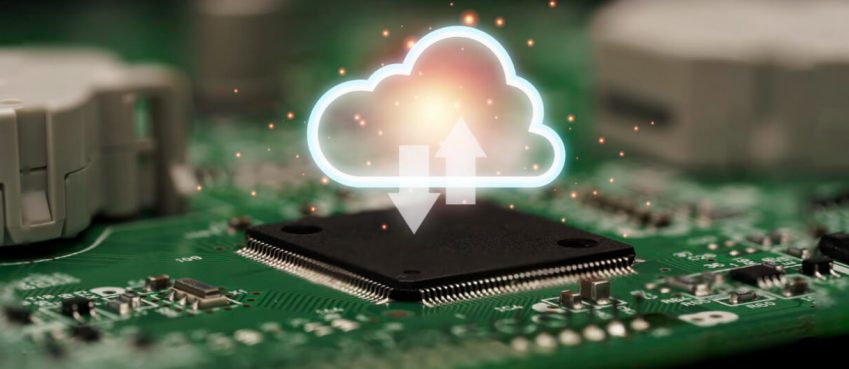
Radio-frequency identification technology has redefined the way we manage assets across various sectors. Offering a seamless means of data capture and transmission via radio waves, RFID asset tracking has become a cornerstone in inventory management and beyond.
What is RFID Tracking
RFID asset tracking involves the use of radio waves to transfer data from RFID tags to a reader connected to a database. These tags store information such as item names, quantities, and inventory locations. Unlike barcodes, RFID tags don’t require a direct line of sight for scanning, making them highly efficient for asset tracking.
How RFID Asset Tracking Works
Implementing RFID for inventory control necessitates a system comprising RFID tags, readers (scanners), antennas, and supporting software. Each asset bears an RFID tag with digital data. Radio waves are used to transfer this data from tags to a reader equipped with an antenna. The reader decodes these waves into digital information, which is then transmitted to the asset-tracking system for storage and analysis.
Also read: 10 Best AI Music Generator In 2025 (Royalty Free Music Generation)Tracking Range of RFID
The tracking range of RFID asset tracking technology varies based on frequency bands and antenna types. Typically, RFID allows scanning from several feet away, with potential ranges spanning from 1 to 1,000 feet, ensuring comprehensive coverage for asset monitoring.
Diverse Applications Across Industries
Retail
In the retail sector, RFID asset tracking enhances inventory accuracy, expedites operations, and elevates customer satisfaction. It streamlines inventory processes, minimizes losses, and optimizes stock management. Retailers embracing RFID witness improved visibility, reduced stockouts, and increased operational efficiency, leading to a remarkable ROI.
Manufacturing
RFID in manufacturing improves asset visibility and aids in tracking critical machinery and tools. Advanced RFID tags withstand extreme conditions, making them ideal for monitoring machinery and ensuring maintenance efficiency. It also finds utility in security and inventory traceability within manufacturing settings.
Healthcare
RFID asset tracking technology in healthcare facilitates patient and equipment tracking, streamlines workflows, and aids in pharmaceutical inventory management. Its wireless communication capabilities significantly enhance hospital operations and contribute to better patient care.
Also read: Walmart Eye Center Review: Is It Worth The Money?Advantages Over Other Solutions
- Automated Data Collection and Swift Scanning: RFID excels in automating data collection and accelerating scanning processes. Unlike barcodes that require line-of-sight and GPS systems reliant on power-hungry processors, RFID tags allow for effortless scanning without precise alignment, contributing to faster inventory checks and reduced operational delays.
- Flexible Reading Ranges and Simultaneous Scanning: RFID’s adaptable reading ranges enable multiple tag scanning at once over considerable distances. While GPS requires consistent power and specific conditions for accurate tracking, and barcodes have limited read ranges, RFID tags can be read from a distance without the need for direct visibility or alignment.
- Enhanced Data Security: RFID employs robust data encryption, ensuring secure transmission between tags and readers. This level of security surpasses that of barcodes and mitigates privacy invasion concerns that can arise with GPS tracking systems.
- Reusability and Reduced Human Error: RFID tags, encased in durable materials, are reusable, minimizing costs in the long run. Additionally, the simplicity of RFID usage reduces the chance of human error, a factor that might occur during barcode scanning.
- Greater Data Storage Capacity: Compared to barcodes, RFID tags have a larger capacity for storing data. This expanded capacity enables more detailed information to be associated with each tracked item or asset.
- Resistance to Damage and Environmental Factors: While barcodes are susceptible to damage and environmental impacts that may compromise their readability, RFID tags are more resilient to such factors. They can withstand harsh environments, including exposure to liquids and metals, which might interfere with GPS signals or damage barcodes.
- Cost-Effectiveness in the Long Run: Despite the initial higher cost of RFID tags compared to barcodes, the long-term cost-effectiveness of RFID technology, stemming from reduced human labor, enhanced accuracy, and reusability, can outweigh the upfront investment.
RFID asset tracking offers superior versatility, security, and efficiency compared to both GPS and barcode tracking systems. Its ability to provide automated, long-range, and secure data collection while minimizing human error makes it a preferred choice for various industries seeking robust asset-tracking solutions.
Choosing The Right RFID Equipment
Euristiq, a company specializing in software engineering and consulting services, assists businesses in digital transformation and scalability. Their expertise extends to implementing RFID technology for effective asset tracking. To select appropriate RFID asset tracking equipment, several factors need consideration: frequency, label types, environmental factors, tag placement, asset value, real-time tracking needs, and compliance. By addressing these elements, Euristiq ensures that the chosen technology aligns perfectly with project requirements, guaranteeing a successful and reliable implementation for asset tracking.
RFID asset tracking technology has emerged as a game-changer in asset management, revolutionizing how businesses across various sectors monitor and optimize their resources. Its seamless data capture, transmission efficiency, and versatility have propelled it to the forefront of inventory control solutions. With the ability to automate data collection, offer flexible scanning ranges, and ensure robust data security, RFID stands out as a superior choice over conventional barcode and GPS systems.
Top 10 News
-
01
Top 10 Deep Learning Multimodal Models & Their Uses
Tuesday August 12, 2025
-
02
10 Google AI Mode Facts That Every SEOs Should Know (And Wha...
Friday July 4, 2025
-
03
Top 10 visionOS 26 Features & Announcement (With Video)
Thursday June 12, 2025
-
04
Top 10 Veo 3 AI Video Generators in 2025 (Compared & Te...
Tuesday June 10, 2025
-
05
Top 10 AI GPUs That Can Increase Work Productivity By 30% (W...
Wednesday May 28, 2025
-
06
[10 BEST] AI Influencer Generator Apps Trending Right Now
Monday March 17, 2025
-
07
The 10 Best Companies Providing Electric Fencing For Busines...
Tuesday March 11, 2025
-
08
Top 10 Social Security Fairness Act Benefits In 2025
Wednesday March 5, 2025
-
09
Top 10 AI Infrastructure Companies In The World
Tuesday February 11, 2025
-
10
What Are Top 10 Blood Thinners To Minimize Heart Disease?
Wednesday January 22, 2025






